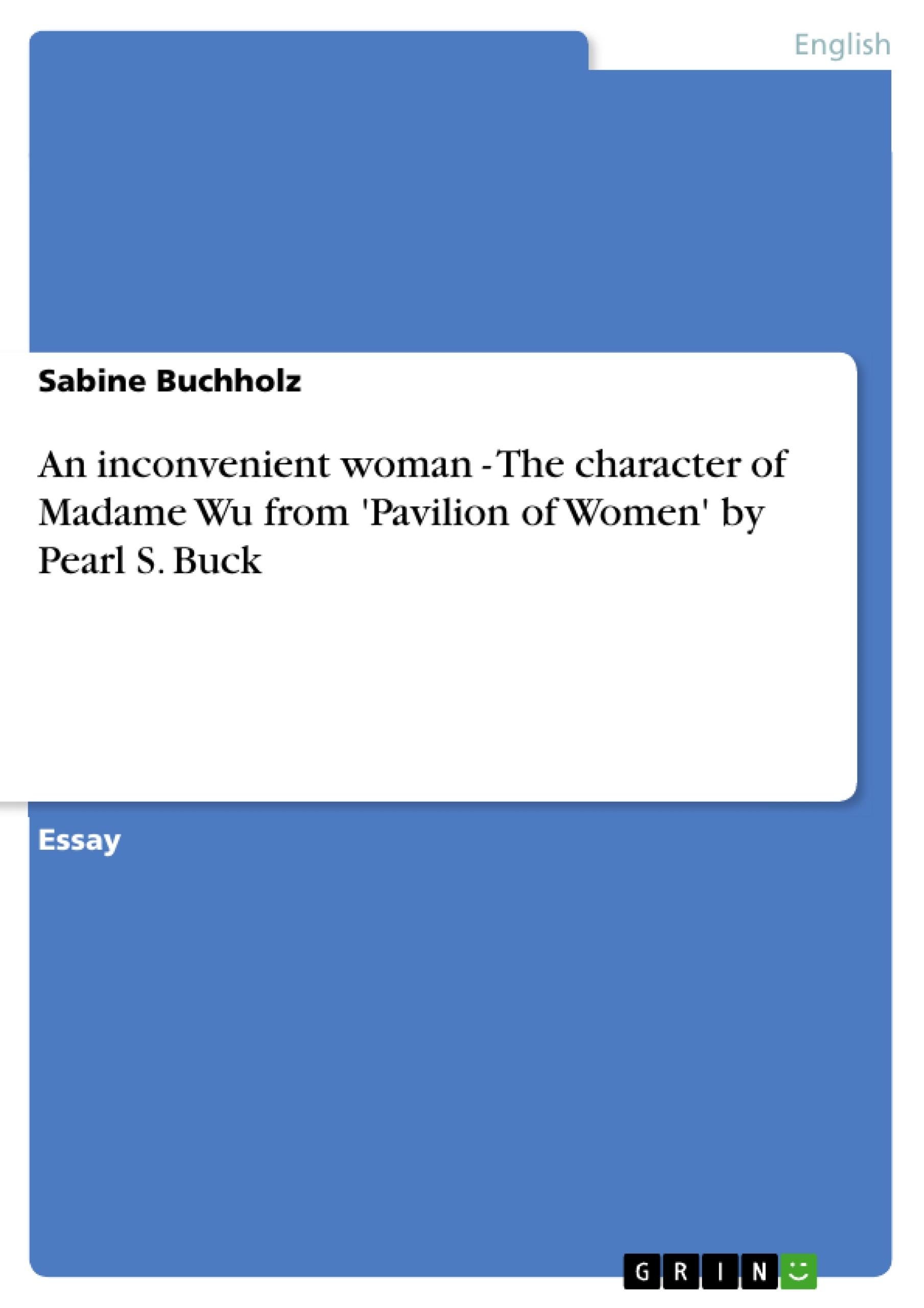In 1946, Pearl S. Buck, winner of the Nobel Prize in 1938, published Pavilion of Women, a novel about a Chinese woman who withdraws from married life by ordering a concubine for her husband. The inspiring work deals with Chinese traditions in particular as well as with general questions of individual freedom and existence, possession, love, religion, (female) psychology, gender issues and human interrelations. Although critics tend to complain especially about the story’s sentimentalism, there are, however, many colourful descriptions of Chinese habits and customs, which may not only teach Western readers a great deal about the exotic culture but also about divergent philosophical and psychological issues. This essay is, above all, to concentrate on the extraordinary female protagonist, Madame Wu, the matron of an influential aristocratic Chinese family. At this, focuses on questions like the following: How is the specific woman presented with regard to her (outer) physical appearance and body features, but also concerning her (inner) characteristic attributes, in other words, her mind? In what way are symbols employed to undermine her characteristics? And, how is the character development – from the indifferent rationalist to the woman capable for love – underlined?
Inhaltsverzeichnis (Table of Contents)
- An Inconvenient Woman: The Character of Madame Wu (from Pavilion of Women by Pearl S. Buck)
- Introduction
- Madame Wu's Appearance and Inner Character
- Symbolism of Orchids and Lotus
- Motherhood and the Development of Madame Wu
- Conclusion
Zielsetzung und Themenschwerpunkte (Objectives and Key Themes)
This essay examines the character of Madame Wu, the female protagonist in Pearl S. Buck's novel *Pavilion of Women*, exploring how her character is presented and developed throughout the narrative. It focuses on the interplay between Madame Wu's outward appearance and her inner world, analyzing the use of symbolism to illuminate her personality and its evolution.
- The portrayal of Madame Wu's appearance and inner character
- The symbolic significance of orchids and lotus in relation to Madame Wu
- The role of motherhood in shaping Madame Wu's character development
- The exploration of Chinese traditions and cultural values
- The themes of individual freedom, love, and human interrelations
Zusammenfassung der Kapitel (Chapter Summaries)
The essay delves into Madame Wu's initial portrayal as a beautiful and seemingly emotionless woman, contrasting her physical perfection with her inner reserve. The text highlights the symbolic significance of orchids, which represent Madame Wu's composure and detachment, and lotus, which foreshadow her latent sensuality and capacity for love. The essay then examines how Madame Wu's interaction with other characters and her own experiences lead to a gradual shift in her character, marked by a developing awareness of her emotions and a growing sense of empathy.
Schlüsselwörter (Keywords)
The key terms and concepts explored in this essay include Madame Wu, *Pavilion of Women*, Chinese culture, symbolism, orchids, lotus, motherhood, character development, individual freedom, love, and human interrelations.
- Quote paper
- Sabine Buchholz (Author), 2006, An inconvenient woman - The character of Madame Wu from 'Pavilion of Women' by Pearl S. Buck, Munich, GRIN Verlag, https://www.grin.com/document/82635



